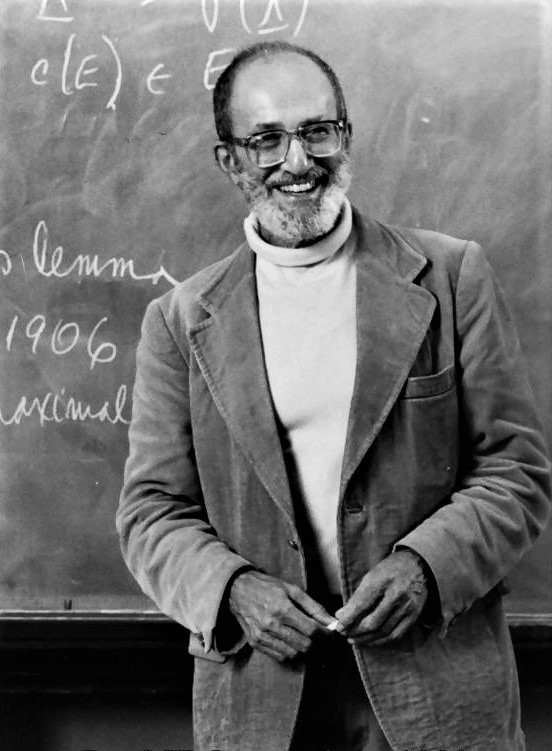Paul Halmos was not just a mathematician; he was a beacon of inspiration, a mentor, and a pioneer in the realm of mathematical thought. His contributions to various fields of mathematics, particularly in functional analysis, measure theory, and statistics, have left an indelible mark that continues to influence generations of mathematicians. Halmos was known for his engaging teaching style and his ability to convey complex mathematical ideas with clarity and enthusiasm. This article delves into the life and work of Paul Halmos, exploring his biography, contributions, and legacy.
Born in the early 20th century, Halmos's journey into the mathematical world began at a young age, shaped by his family's encouragement and his inherent curiosity. Throughout his career, he championed the importance of mathematical education and communication, believing that the beauty of mathematics could be appreciated by all who were willing to engage with it. His numerous publications, including textbooks and influential papers, reflect his belief in making mathematics accessible and enjoyable.
As we explore the life of Paul Halmos, we will uncover the depths of his academic achievements, the personal philosophy that guided his work, and the lasting impact he has made on the field of mathematics. With a focus on both his professional milestones and personal anecdotes, this article aims to present a comprehensive portrait of a man whose passion for mathematics was matched only by his desire to inspire others.
What is the Biography of Paul Halmos?
Paul Halmos was born on March 3, 1916, in Budapest, Hungary, and immigrated to the United States in 1929. He pursued his education at the University of Illinois, where he obtained his Ph.D. in mathematics in 1938 under the supervision of Joseph L. Doob. Halmos quickly made a name for himself in the academic community, contributing to a variety of mathematical fields and earning numerous accolades throughout his career.
| Personal Details | Bio Data |
|---|---|
| Full Name | Paul Richard Halmos |
| Date of Birth | March 3, 1916 |
| Place of Birth | Budapest, Hungary |
| Date of Death | July 2, 2006 |
| Nationality | American |
| Field of Study | Mathematics |
| Notable Works | Finite Dimensional Vector Spaces, Measure Theory, and more |
| Awards | National Medal of Science, American Mathematical Society awards |
What Were Paul Halmos's Major Contributions to Mathematics?
Paul Halmos's contributions to mathematics are vast and varied. Some of his most notable works include:
- Measure Theory: Halmos made significant advancements in measure theory, a fundamental area in mathematical analysis.
- Functional Analysis: His work in functional analysis helped shape the understanding of infinite-dimensional spaces.
- Statistical Decision Theory: Halmos contributed to the foundations of decision theory, providing insights into statistical inference.
- Mathematical Education: His textbooks, including "Finite Dimensional Vector Spaces," have been widely used and praised for their clarity and pedagogy.
How Did Paul Halmos Influence Mathematical Education?
One of the hallmarks of Paul Halmos's career was his dedication to teaching and mentoring students. He believed that mathematics should be taught in a way that emphasizes its beauty and relevance. Halmos's approach included:
- Engaging Lectures: He was known for his captivating lectures that made complex topics accessible and interesting.
- Writing Style: His clear and concise writing style in his textbooks has helped countless students grasp difficult concepts.
- Mentorship: Many students and young mathematicians credit Halmos with shaping their careers through his guidance and encouragement.
What Legacy Did Paul Halmos Leave Behind?
Paul Halmos's legacy extends beyond his published works and academic accolades. He left a profound impact on the mathematical community through:
- Inspiration: His passion for mathematics inspired countless students and colleagues to pursue their own mathematical journeys.
- Community Engagement: Halmos was an active participant in mathematical societies, promoting collaboration and sharing of ideas.
- Advocacy for Clarity: He advocated for clarity in mathematical communication, emphasizing that mathematics should be accessible to all.
What Awards and Honors Did Paul Halmos Receive?
Throughout his distinguished career, Paul Halmos received numerous awards and honors, including:
- National Medal of Science (1983)
- Lifetime Achievement Award from the American Mathematical Society (2005)
- Distinguished Fellow of the American Mathematical Society
- Honorary Doctorates from various universities
How Can We Apply Paul Halmos's Philosophy Today?
In today's rapidly evolving educational landscape, Halmos's philosophy on teaching and communication remains relevant. Educators and mathematicians can apply his principles by:
- Fostering a love for mathematics through engaging teaching methods.
- Encouraging collaboration and open dialogue in mathematical discussions.
- Prioritizing clarity and accessibility in mathematical writing and presentations.
Conclusion: The Enduring Impact of Paul Halmos
Paul Halmos's contributions to mathematics and education resonate strongly in today's mathematical community. His legacy serves as a guiding light for both current and future generations of mathematicians. By embodying his principles of clarity, accessibility, and passion, we can continue to honor his memory and inspire others in the pursuit of mathematical knowledge.




